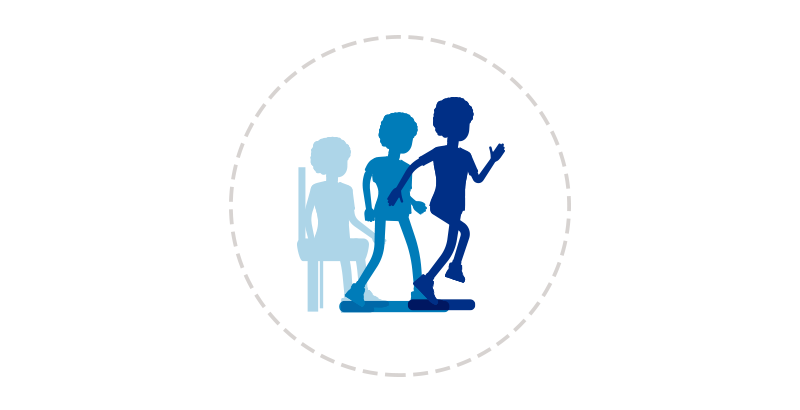Sedentary Time
![]() The Boston Children’s fit kit offers strategies, tools, and activities on five key topics — nutrition, fitness, sedentary time, sleep, and stress — to help families live healthy, active lifestyles. Learn about the Boston Children’s fit kit or keep reading below to dig into sedentary time.
The Boston Children’s fit kit offers strategies, tools, and activities on five key topics — nutrition, fitness, sedentary time, sleep, and stress — to help families live healthy, active lifestyles. Learn about the Boston Children’s fit kit or keep reading below to dig into sedentary time.
Most kids (and adults) spend too much time sitting. Children sit in school for a significant portion of the day. Then they spend hours sitting in front of screens doing homework, watching TV, playing video games, or using social media. This is called sedentary or sitting-around time.
Compared with previous generations, today’s families spend much more time in settings that not only limit physical activity but also require prolonged sitting. Think about the time you spend sitting — at school or work, at home, in cars or buses, and at other places in your community. Studies have found that kids spend more than seven hours per day in sedentary activities — that equates to about 50 percent of waking hours. And only about half of kids stick to keeping their entertainment screen time (not school-related) to the recommended limit of one or two hours per day.
Risks of a sedentary lifestyle
Some sedentary activities (such as reading and doing homework) are important, and everybody needs some downtime to relax. But research studies show that a sedentary lifestyle has negative effects on children’s health, including increased risk for:
- weakened muscles and bones
- slower metabolism
- obesity
- shorter life expectancy
- earlier onset of adult-type health conditions like type 2 diabetes, cardiovascular disease, high blood pressure, and high cholesterol
- depression or anxiety
Using the Boston Children’s fit kit, kids will learn these messages to reduce sedentary time:

limit sitting-around time whenever possible

limit entertainment screen time to no more than one or two hours per day
Does sedentary time matter for active kids?
Sitting too much differs from not getting enough exercise and carries its own health risks. Even kids who exercise 60 minutes every day may face health risks if they spend the rest of the day engaged in sedentary activities. It’s important to get up and move every hour during the day. In the Boston Children’s fit kit, you’ll find sitting-stopper strategies and fun step challenges to get you moving.
What is entertainment screen time and why is it a problem?
Entertainment screen time is any recreational time (not for school) in front of a TV, video game, movie, cell phone, computer, or tablet. Studies show that children spend most of their leisure time in front of screens. As technology has become more affordable and pervasive, it has had a significant impact on both children and adults.
Too much entertainment screen time can lead to other problems, including unhealthy eating and trouble sleeping. To learn more, read on in the Boston Children’s fit kit.
Main messages
Using Boston Children’s fit kit, kids will learn how to follow the main messages for reducing sitting-around time and entertainment screen time. Follow the links below to learn more.
Glossary
Active breaks: Times when you get up and move during long periods of sitting.
Active recreation: Fun and enjoyable physical activity during free time.
Active transportation: Using human power to move from one place to another.
Entertainment screen time: Hours spent watching television and using other entertainment media (video games and electronic devices such as computers, phones, and tablets) that are not associated with academic interests.
Lifestyle activity: Physical activity performed as part of daily living, replacing inactive behaviors with active behaviors.
Sedentary time: Time a person spends sitting or lying down during waking hours.
